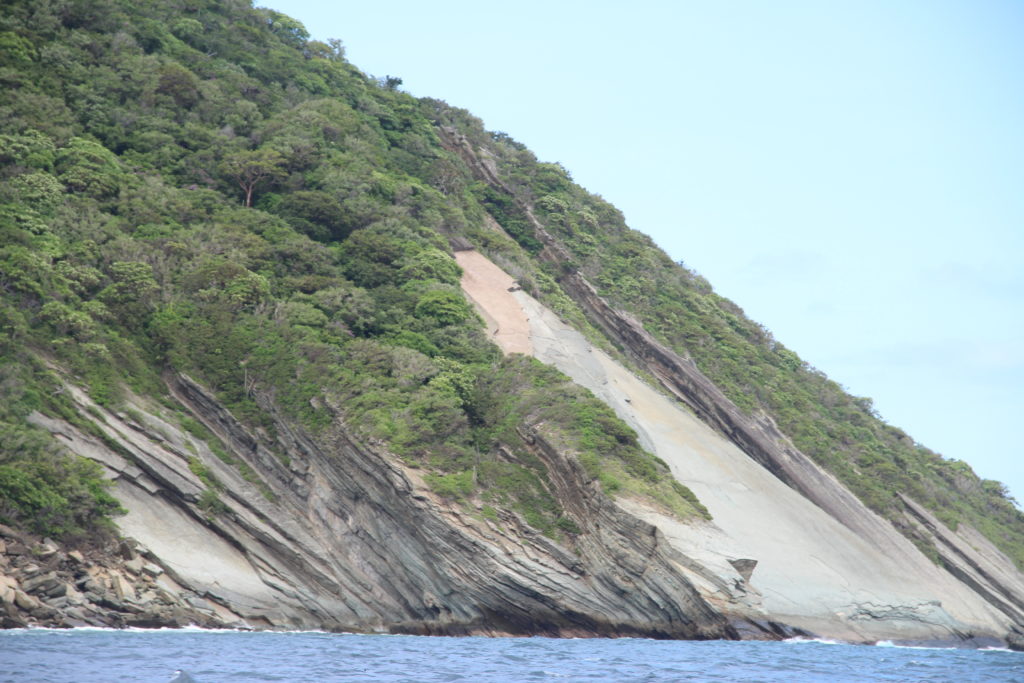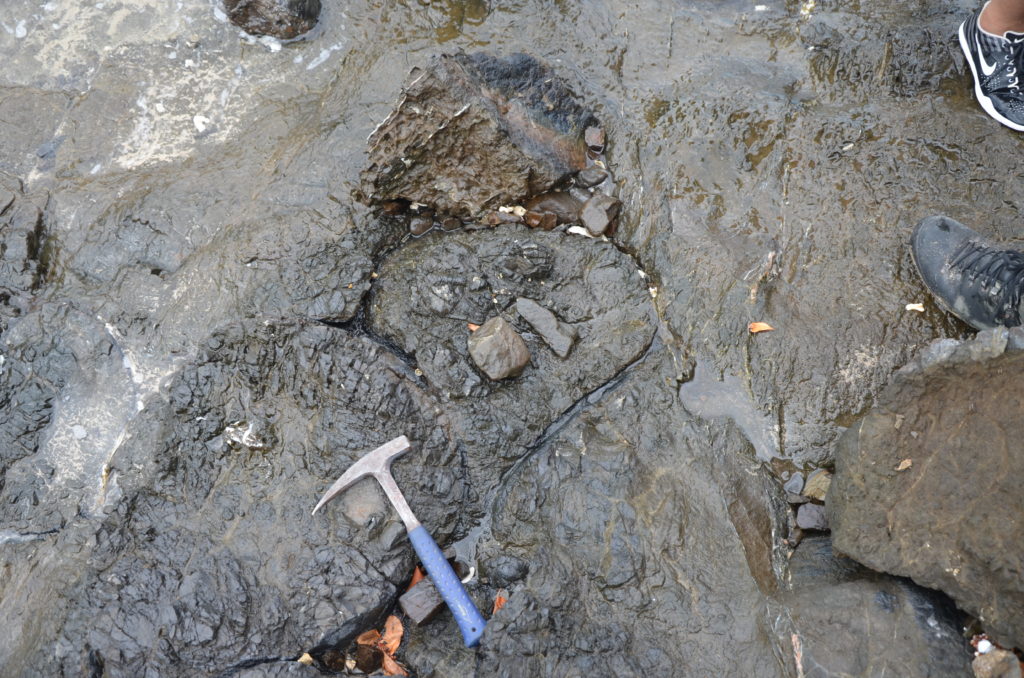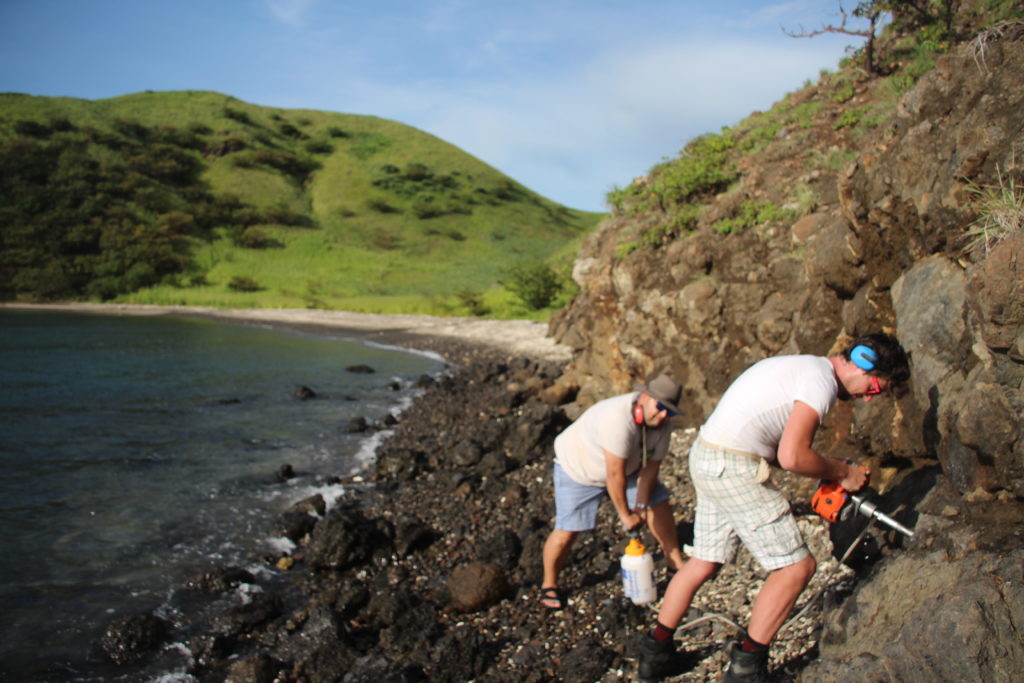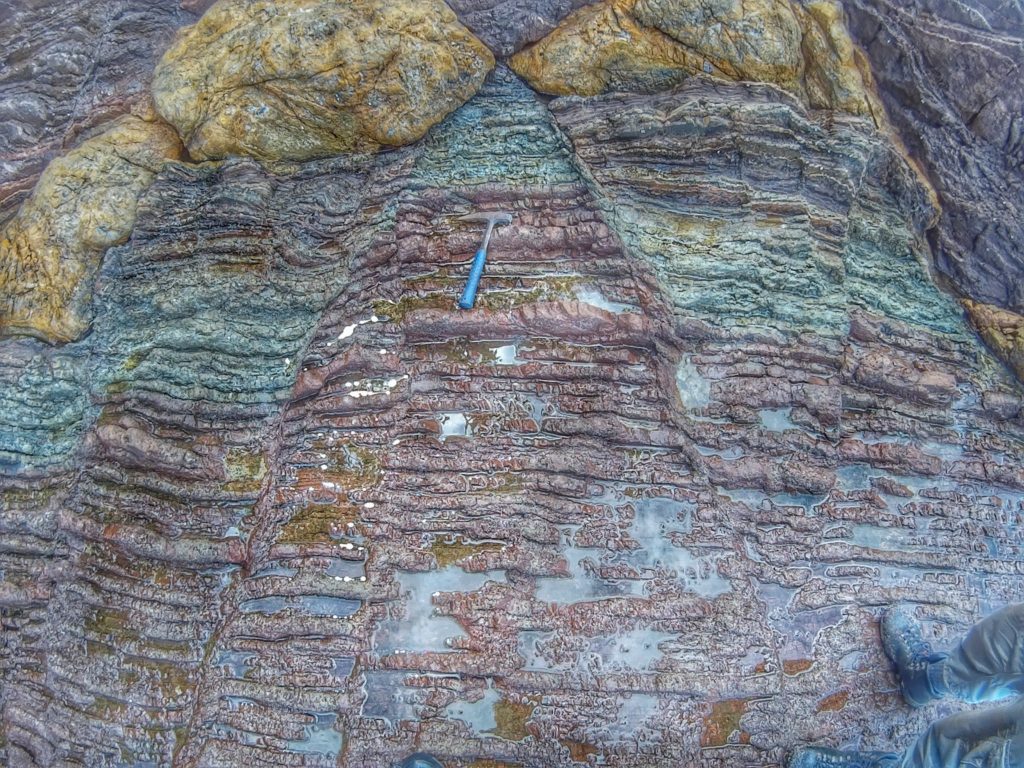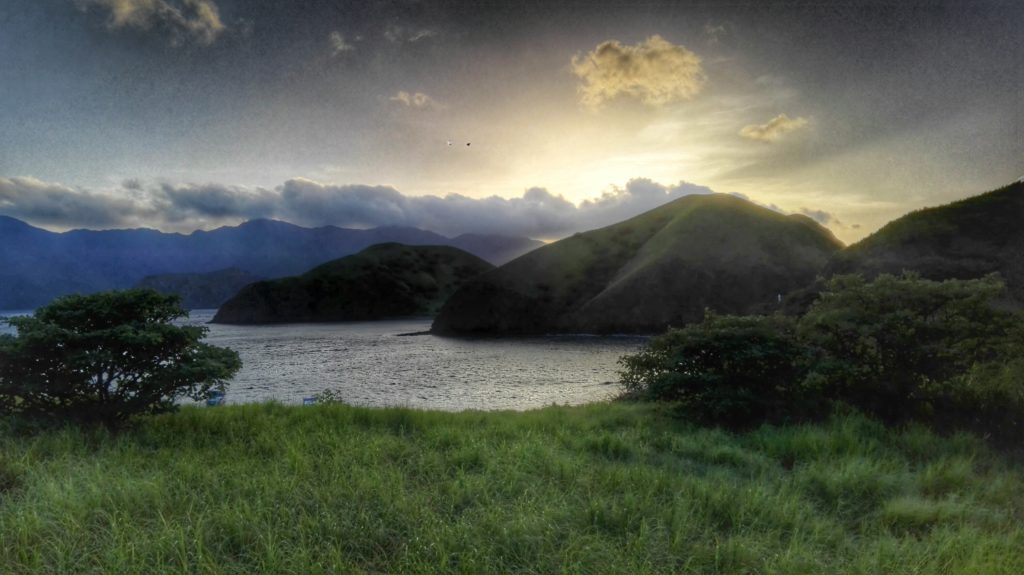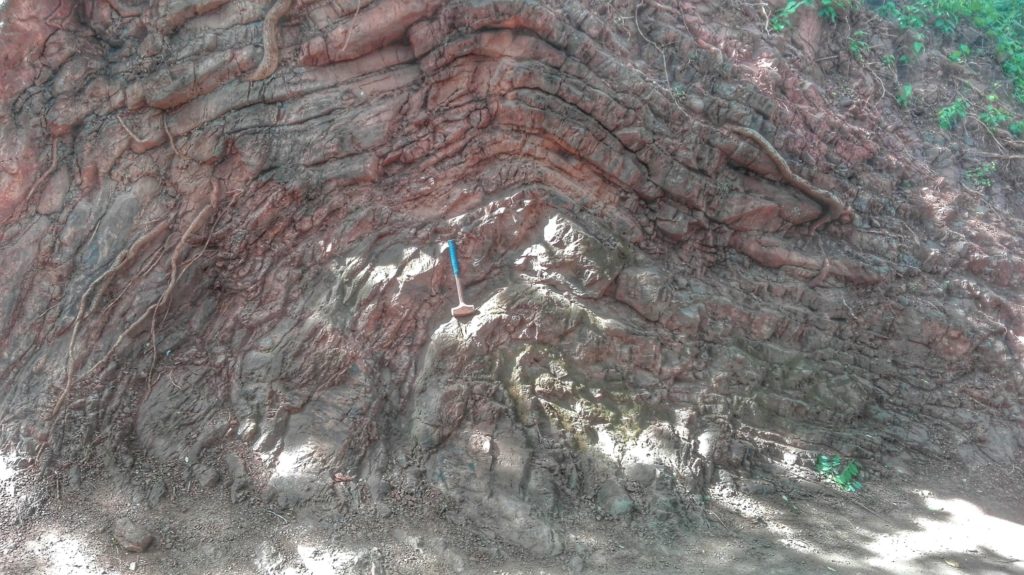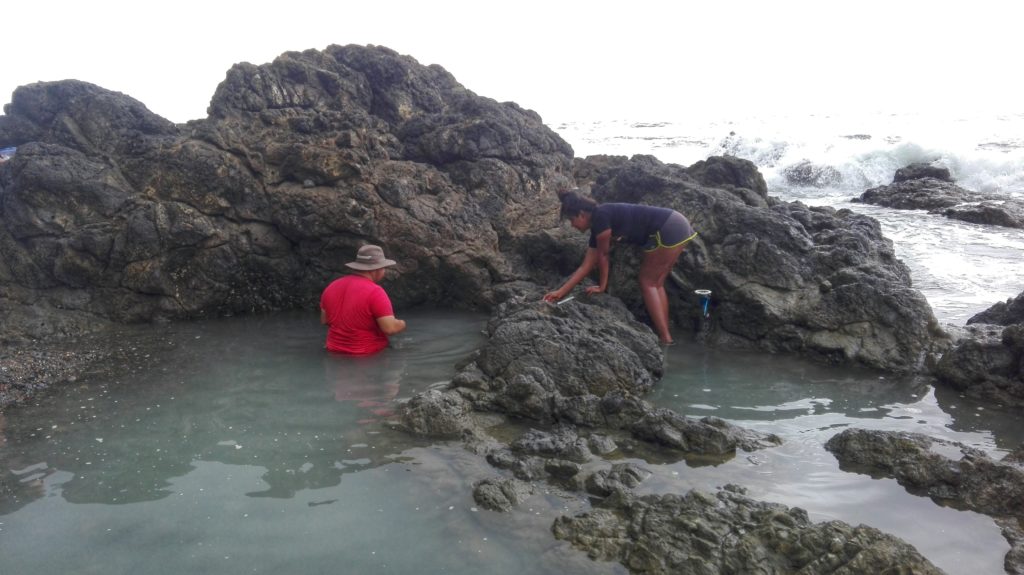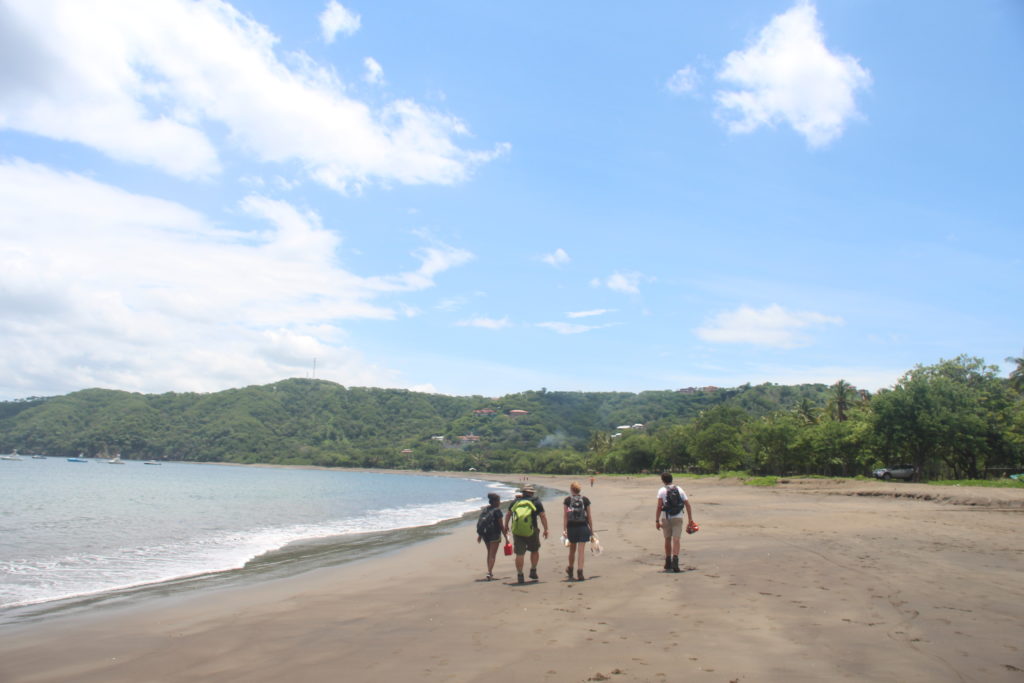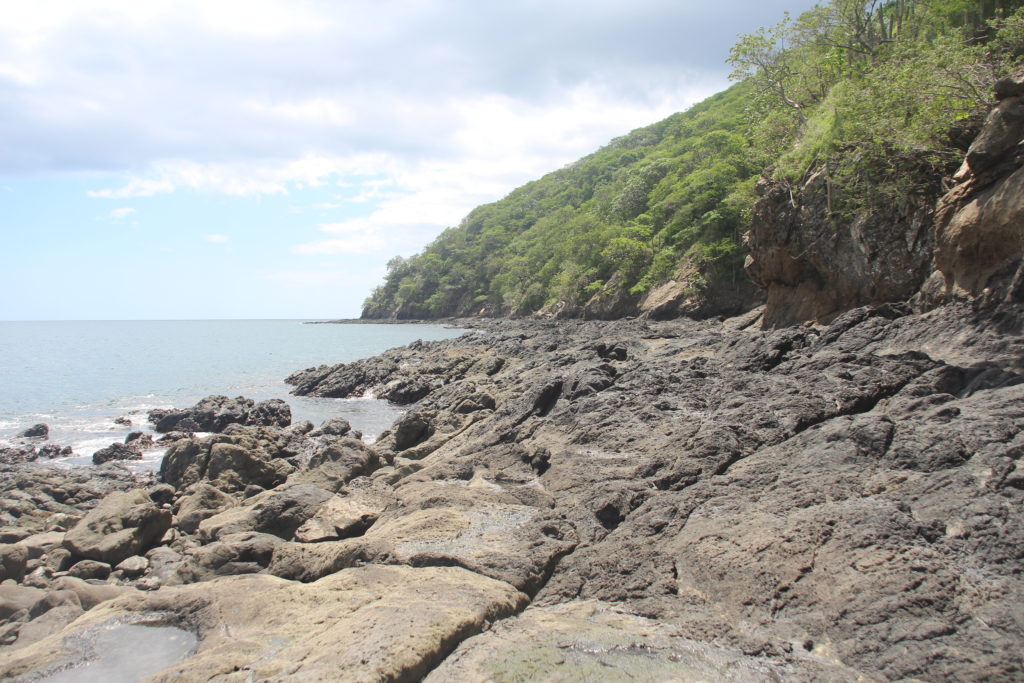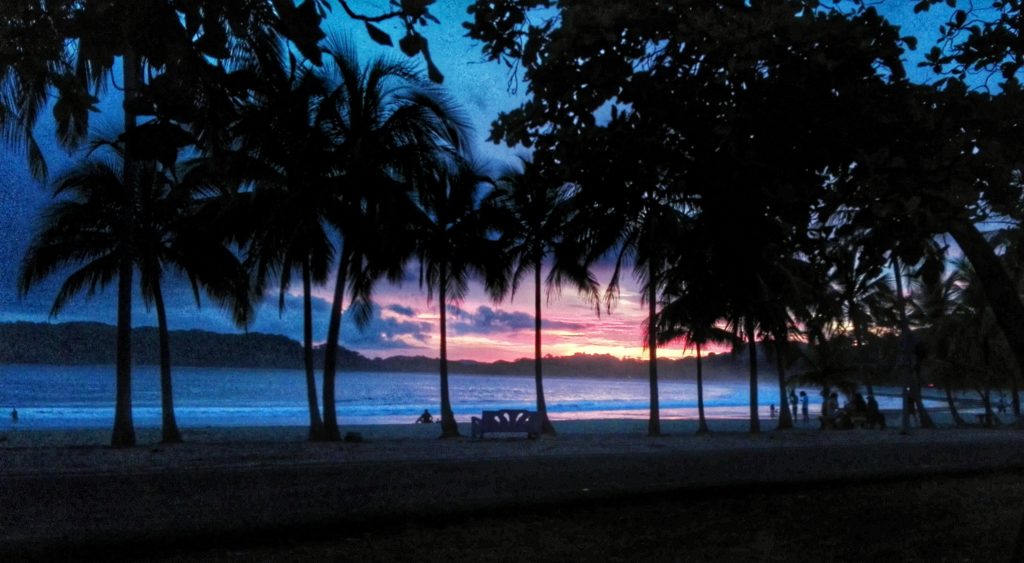Erik is currently a graduate-student in the Earth, Structure and Dynamics Masters program at Utrecht University trying to combine geology and geodynamics. Currently working on his graduation thesis at the paleomagnetic lab Fort Hoofddijk.
The Panthalassa ocean, surrounding Pangea, must have been underlain by multiple plates which, at present, have mostly been lost to subduction. In order to make a plate-tectonic reconstruction of plates that no longer exist on the Earth’s surface, one has to dig deeper and try to find other ways of harvesting data. For instance, going on circum-Pacific fieldwork to find small bits of oceanic crust that have been scraped off during subduction. One of the possible locations is in Costa Rica, particularly the Santa Elena- & Nicoya-peninsulas. Where, by means of paleomagnetism, we are aiming to get paleolatitudes of Jurassic and Cretaceous oceanic crust of the Panthalassa ocean.
Last July, I was the lucky graduate student to participate in this fieldwork together with my supervisors Dr. Douwe van Hinsbergen and PhD-candidate Lydian Boschman, as well as our local expert and guide Dr. Kennet Flores with his graduate-student Ardanna Bandoo. From our list of targets, we started with sampling pillow basalts and an accretionary complex (radiolarites and dikes) found on the south side of Santa Elena. Fortunately, this part of the peninsula has no roads for easy access, so we had to charter a boat to get us there. For a good part of a week, we stayed on the inhabited islands of the Islas Murcielagos from which we visited the peninsula and other small islands.
For everybody who has not been lucky to go on a fieldwork in the tropics (yet), I will give you a note: Weathering and erosion are big issues in the jungle so, for outcrops, you are reliable to roadcuts or wave-dominated beaches. This fieldwork mostly consisted of the latter, including rocky beaches where swimming ashore was necessary to get to the outcrops while the captain brought our equipment with a kayak.
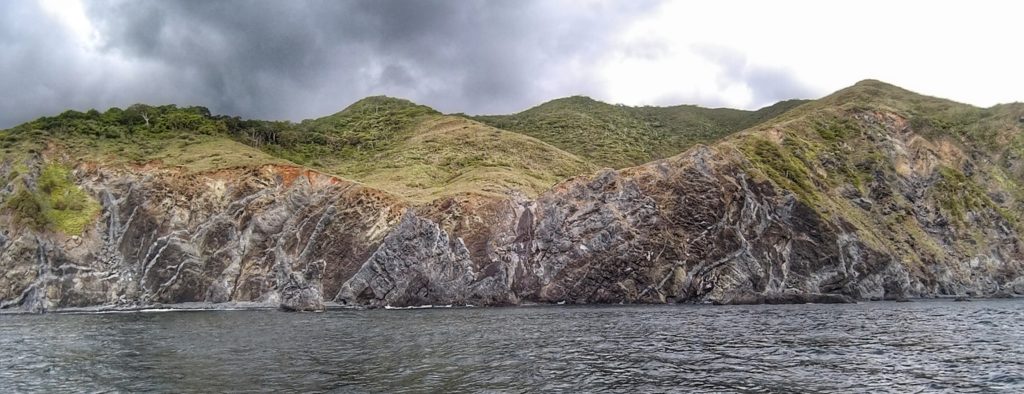
And sampling this variety of (grey) dikes cutting the (dark) basalts on our way back to the mainland, Punta Santa Elena
On the Nicoya peninsula, where the second part of our field trip took place, we sampled radiolarites, pillow basalts, and the occasional sedimentary sequence. Some of the basalts found on the Nicoya peninsula are thought to be related to the Caribbean Large Igneous Province (CLIP). Our sampling could provide the paleolatitudinal constraints on the locations where these volcanic events have occurred. The pacific coast is more reachable at the Nicoya peninsula, so we said our goodbyes to the boat. The tourist filled beaches on the Pacific coast were still good for some beautiful outcrops, a lot of samples and, of course, some beautiful sunsets. As this peninsula had more roads to use, we also sampled in the jungle at small creek beds between the howler monkeys that were pretty interested in the forest-invading gringos.
Our samples have arrived in the Netherlands and shortly I will start measuring the remnant magnetic signal. Hopefully, we can get a good constraint on the plate motions in the Mesozoic oceanic crust which is now situated in Costa Rica.
![]() This work is licensed under a Creative Commons Attribution-NonCommercial-ShareAlike 4.0 International License.
This work is licensed under a Creative Commons Attribution-NonCommercial-ShareAlike 4.0 International License.

